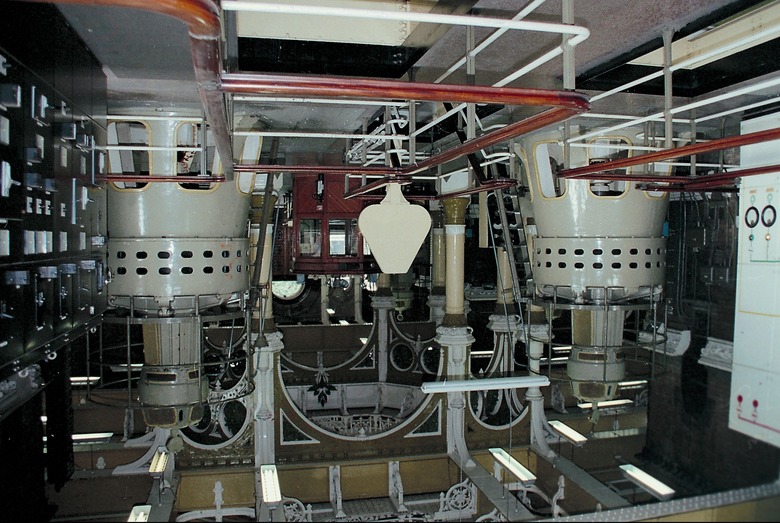How To Troubleshoot A Servo Drive
A servo drive is a device that provides proportionate control for electromechanically controlled motors and actuators with the ability to provide positioning and velocity data back to the servo drive. They are used in applications from model airplanes to industrial applications that support motors of hundreds of horsepower ratings. Servo drives have become popular in the control of energy consumption and are often used as conservation devices when controlling the output or velocity of motors used in many industries. There are two basic versions of servo drives: analog, which was the early version, and digital, which is the current version.
Step 1
Use a volt ohm meter to determine if there is power to the servo drive at its disconnect. Test the circuit protection to make sure the voltage potential is within the specifications of the drive. The source voltage will likely range from 210 volts to 480 volts, depending on the manufacturer's drive specifications. Look in the current manufacturer's service guide to determine if the readings are what they should be for the configuration and application of the drive. In general the drive will take the AC input voltage and potential and convert it to a manageable voltage range that may be DC or AC, depending on the design and intent of the load being controlled. The motor or device receiving the output values is designed to provide feedback data to the servo drive module so the servo drive can control the load within a specific set of parameters.
Step 2
Find the output terminals on the module itself from the servo drive manual for the specific model and type of drive you are using. Check the manual for the correct scale and range to set the meter that will be used for testing the output values. Follow the manual's directions for attaching the leads to the module — misapplied leads could damage the servo drive and result in system failure.
Step 3
Connect the meter leads and follow the manufacturer's directions closely. Set up the controls for the servo drive to a value that can be determined by the test gear. Read the output value and compare the reading with the graphs and charts provided by the manufacturer.
Step 4
Follow the procedures given in the manual through the full range of the device and log output data for future use. Maintain a log of the testing results to be used in later tests. The output values will be variable to regulate the motor or device it is controlling. Check the manual to see if the output values are within the desired range for operation.
Things Needed
- Volt ohm meter capable of frequency scanning, ex. Fluke model 190-204
- Drive manufacturer's troubleshooting guideline manual
TL;DR (Too Long; Didn't Read)
The testing tools and meters needed to troubleshoot a servo drive are more complex than the typical meters found at the retail level and usually come from industrial tool supply sources.
Warning
This is a very complex process, and readers must know how an electromechanically controlled motor, an actuator and a volt ohm meter work before attempting to troubleshoot a servo drive.
Cite This Article
MLA
Barton, Mary. "How To Troubleshoot A Servo Drive" sciencing.com, https://www.sciencing.com/troubleshoot-servo-drive-11415709/. 24 April 2017.
APA
Barton, Mary. (2017, April 24). How To Troubleshoot A Servo Drive. sciencing.com. Retrieved from https://www.sciencing.com/troubleshoot-servo-drive-11415709/
Chicago
Barton, Mary. How To Troubleshoot A Servo Drive last modified March 24, 2022. https://www.sciencing.com/troubleshoot-servo-drive-11415709/
